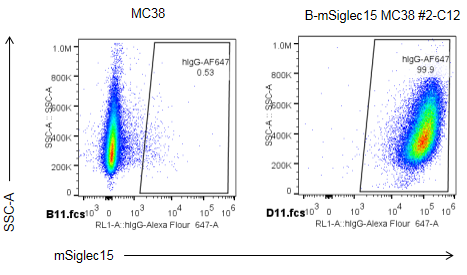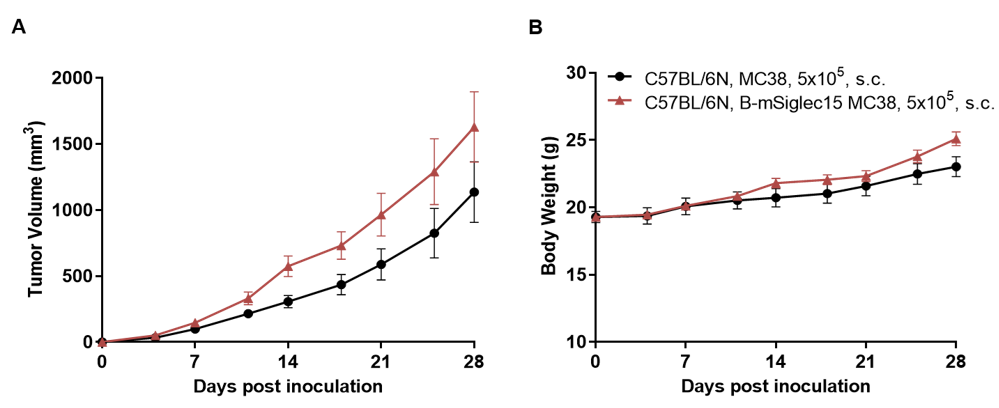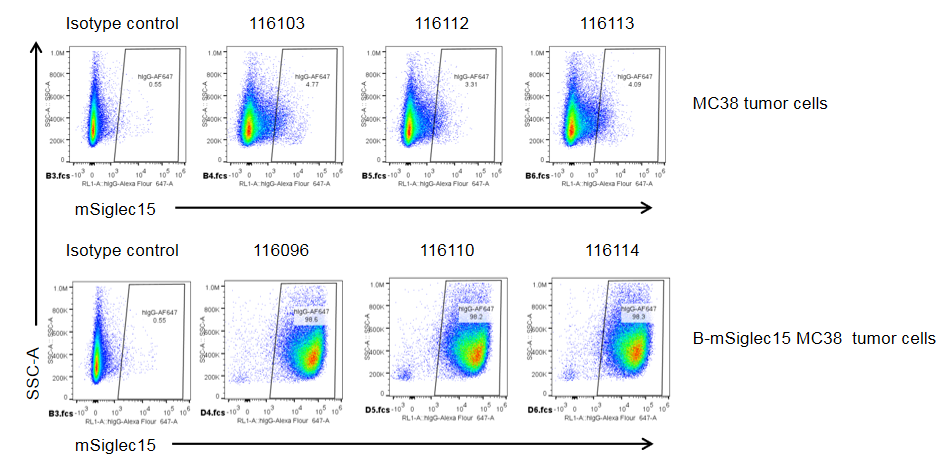|
Common name |
B-mSiglec15 MC38 | Catalog number | 311529 |
| Aliases | Cd33l, Cd33l3, EG620235, SIGLEC-I | Disease | Colon carcinoma |
|
Organism |
Mouse |
Strain | C57BL/6 |
| Tissue types | Colon | Tissue | Colon |
Description
The mouse Siglec15 gene was insert into mouse ROSA26 site. Mouse Siglec15 is highly expressed on the surface of B-mSiglec15 MC38 cells.
Application


Subcutaneous homograft tumor growth of B-mSiglec15 MC38 cells. B-mSiglec15 MC38 cells (5x105) and wild-type MC38 cells (5x105 ) were subcutaneously implanted into the C57BL/6N mice (female, 5-8 week-old, n=5).Tumor size and mice body weight were measured twice a week. (A) Tumor average volume ± SEM, (B) Mice body weight (Mean± SEM). Volume was expressed in mm3 using the formula: V=0.5a X b2, where a and b were the long and short diameters of the tumor, respectively. As shown in panel A, B-mSiglec15 MC38 were able to establish tumor in vivo and can be used for efficacy studies.
Tumor growth curve of individual mice

B-mSiglec15 MC38 tumor cells growth of individual mice. B-mSiglec15 MC38 cells (5x105) and wild-type MC38 cells (5x105 ) were subcutaneously implanted into the C57BL/6N mice (female, 5-8 week-old, n=5). As shown in panel, B-mSiglec15 MC38 cells were able to establish tumors in vivo and can be used for efficacy studies.
Protein expression analysis of tumor cells












